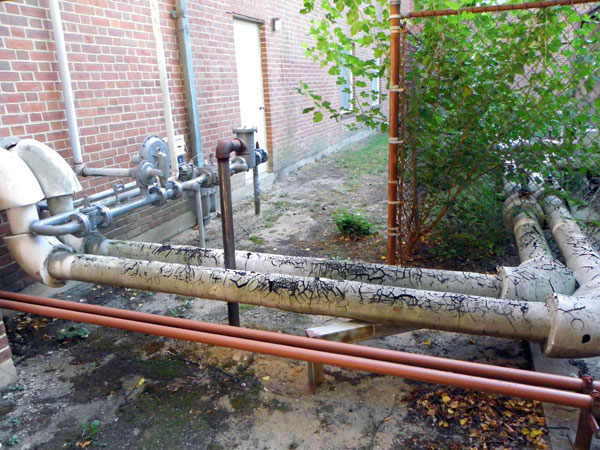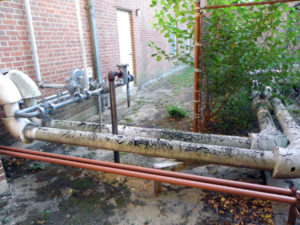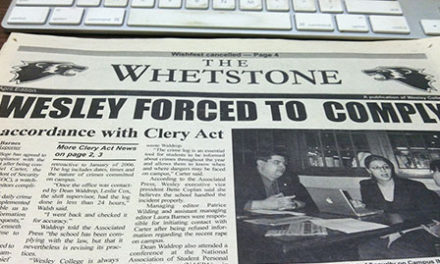Going green costs a lot of green.
By paying Aramark $2.5 million, Wesley will reduce its carbon footprint over the next four decades.
“It is part of going green,†said Eric Nelson, vice president of finance.
The money will pay for a Climate Action Plan (CAP) that is supposed to reduce carbon and save energy, and should save the college about $300,000 a year.
“The main reasons are to cut back on emissions of sulfur and dioxide into the air,†Nelson said.
The highest levels of carbon emissions in 2008 came from electricity, heating and cooling and running automobiles. Electricity makes up 67 percent of emissions.
When the project is done, Wesley should cut carbon emissions by 1,300 metric tons each year.
Wesley was one of 300 original signers to the American Colleges and Universities Presidential Climate Commitment (ACUPCC) in 2007 under former president Scott Miller, said Chuck Arthur, facility director for Aramark at Wesley.
“We agreed to start a process, by the year 2030, we would cut our emissions to zero and be carbon zero,†Nelson said.
According the ACUPCC’s website, schools agree to complete an emissions inventory, set a target date within two years and “interim milestones for becoming climate neutral.†They also promise to take immediate steps to reduce greenhouse gas emissions, integrate sustainability into the curriculum, and make their action plan, inventory and progress reports public.
With help from an engineering group, Aramark will conduct a Green House Gas Study to figure out how much the college is spending on energy, Arthur said.
The last step is the Energy Performance Contract (EPC), which will cost the college $2.5 million, and will be implemented over 12 years.
The majority of this step will take place between May and August of 2011, Arthur said. This includes new lighting and replacing the boilers in Roe, Williams and Gooding Halls from steam to hot water.
Phase One, which will occur between 2010 and 2015, will implement a campus-wide lighting control policy, create a computer shut-off policy, develop a campus parking offset program, expand recycling, and provide training to operations and facilities staff for “best energy practice.â€
Air handling units, which are used to circulate air in heating, ventilating and air conditions systems, will be heightened, coils will be fixed and cleaned, and air leaks will be fixed, Arthur said.
“There will be a base automated control system to control and shut down air handlers,†he said.
The operational control system will provide better climate satisfaction, Arthur said. It reduces energy consumption dramatically.
“We estimate a 16 percent carbon reduction as soon as it is implemented,†said Dr. William Johnston, president of the college.
There will also be significant energy savings.
“Behind the scenes thermostat machines that run things will be replaced with modern technology,†Nelson said. “We will be running a lot cleaner.â€
Arthur said the program will pay for itself through energy savings.
“As energy is reduced, money is saved,†Arthur said. “Aramark guarantees the savings.â€
Aramark said that Wesley will not have to pay for the program if the college’s utility bill is not reduced. If the savings is greater than projected, Aramark will split the difference with the college.
“We expect a 26 percent reduction in fossil fuel,†Arthur said. “We are expecting to save more. It is a win-win situation.â€
Phase Two of the plan will go from 2015-2020, and will develop “an ongoing commissioning program that addresses the daily changes and maintenance needs in an existing building, and establish zip car and- or an electric-based car program.â€
Phase Three, will run until 2050.
In this phase, Wesley will purchase renewable energy credits, have a campus wide installation of green roofing, provide cogeneration on campus, have 4-day class schedules, upgrade windows, roofs, and air infiltration corrections and expand online courses.






